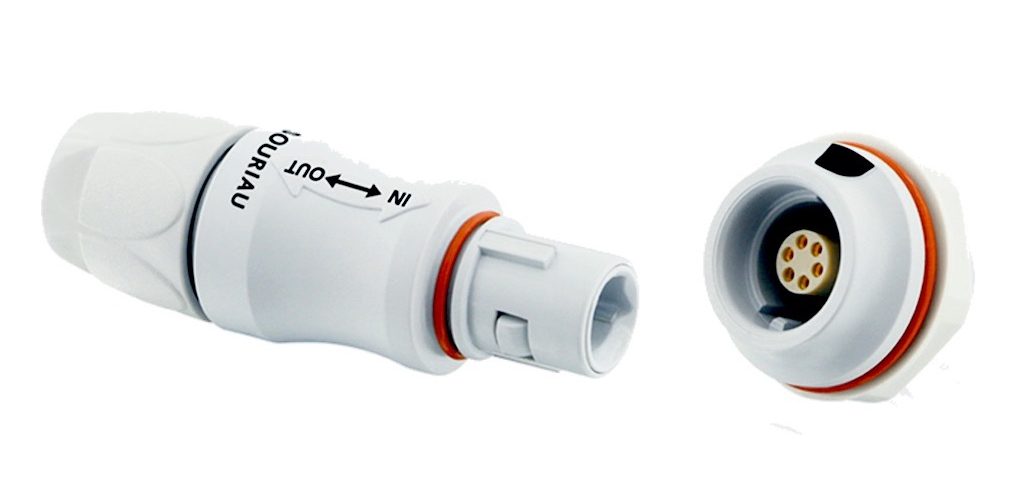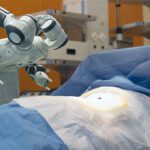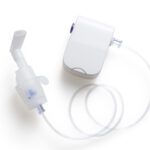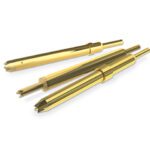Connector Industry Meets Pressing Demand for Advanced Medical Connectivity Products
In a year of changing market conditions and unprecedented global demand for lifesaving medical technologies, the electronics industry has stepped forward to meet new challenges.
The world is facing challenging times stemming from the coronavirus pandemic, including healthcare uncertainties, record high unemployment, and social unrest. These turbulent market conditions are fueling a global economic recession that could potentially reduce medical connector sales by more than 20% in 2020, according to a new Bishop & Associates market report. However, innovative medical devices will stimulate unprecedented growth in specific medical technologies over the next five years, as designers integrate new medical connectivity products — ranging from advanced connectors and cable assemblies to disposable wire and cable products — into devices used to treat the virus and other health conditions.
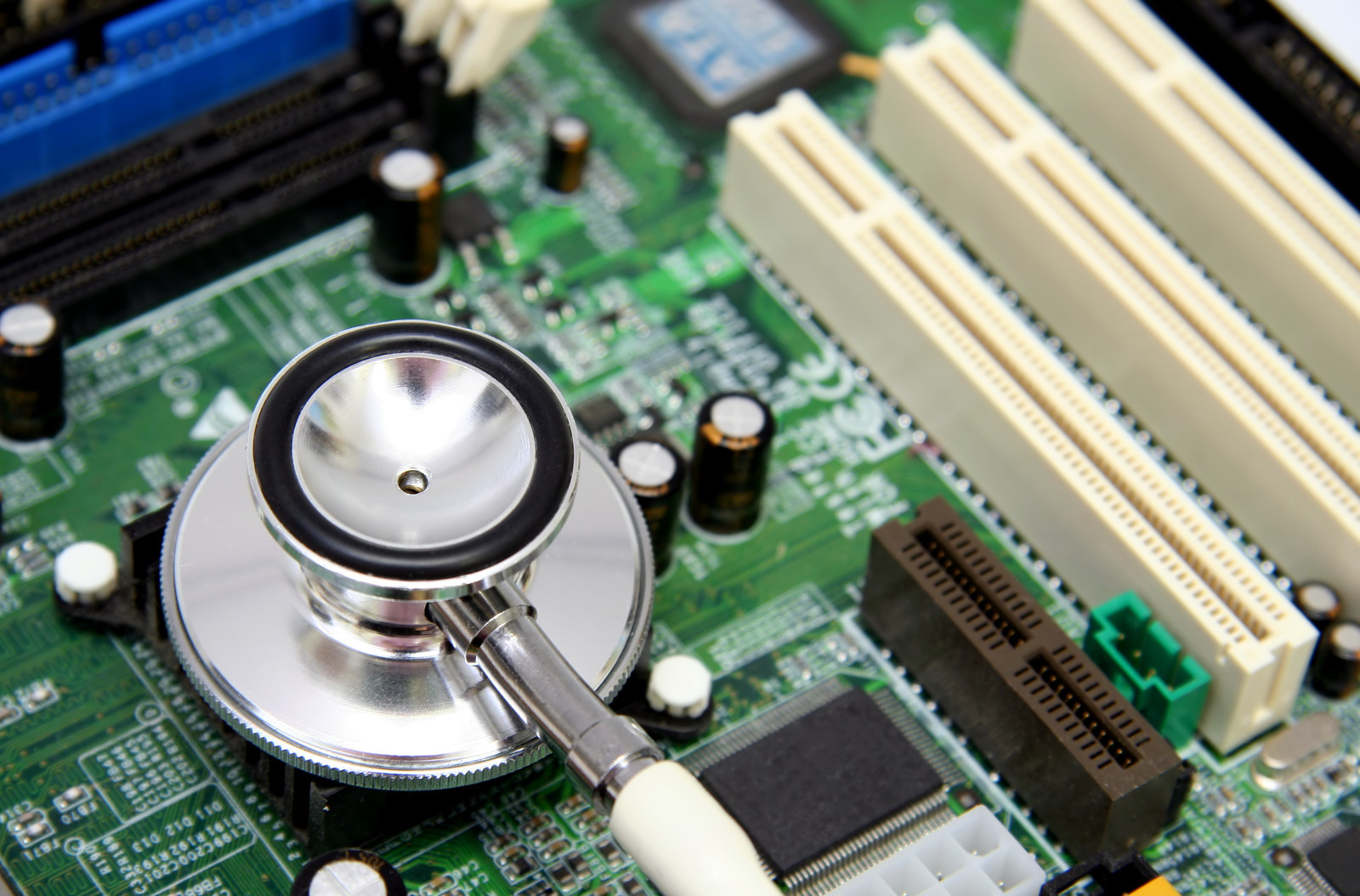
We expect growth will be driven by the return of elective medical procedures, modifications to government healthcare policies, changes to business continuity and supply chain strategies, and increased outsourcing trends for innovative medical devices that address the worldwide needs of a growing and ageing population. We also anticipate that emerging markets, new entrants, and technology-driven investments will create further growth opportunities for medical equipment and the interconnect technology that enables next-generation care.
Many significant trends will shape the development of medical technologies in the years ahead. State-of-the-art diagnostic imaging equipment is evolving from larger cart-based ultrasound systems to handheld and even wireless ultrasound devices that offer mobility without compromising image quality. Wireless and portable digital X-ray equipment, computed tomography medical devices on wheels, and mobile CT arms offer enhanced portability to bring the diagnostic procedure to the patient. Digital dental X-ray products also enhance the patient user experience.
Traditionally, patient monitors mounted on walls had many tangled cable assemblies tethered to the patient. Over the past several years, this evolved to multi-parameter cables at the patient bedside, which has since evolved to wireless telemetry devices that bring the cabling even closer to the patient and improves mobility. Vital signs patient monitors have continued to evolve and miniaturize into thinner, lighter, wireless, wearable devices that improve the user experience, are easier to use, and are more comfortable.
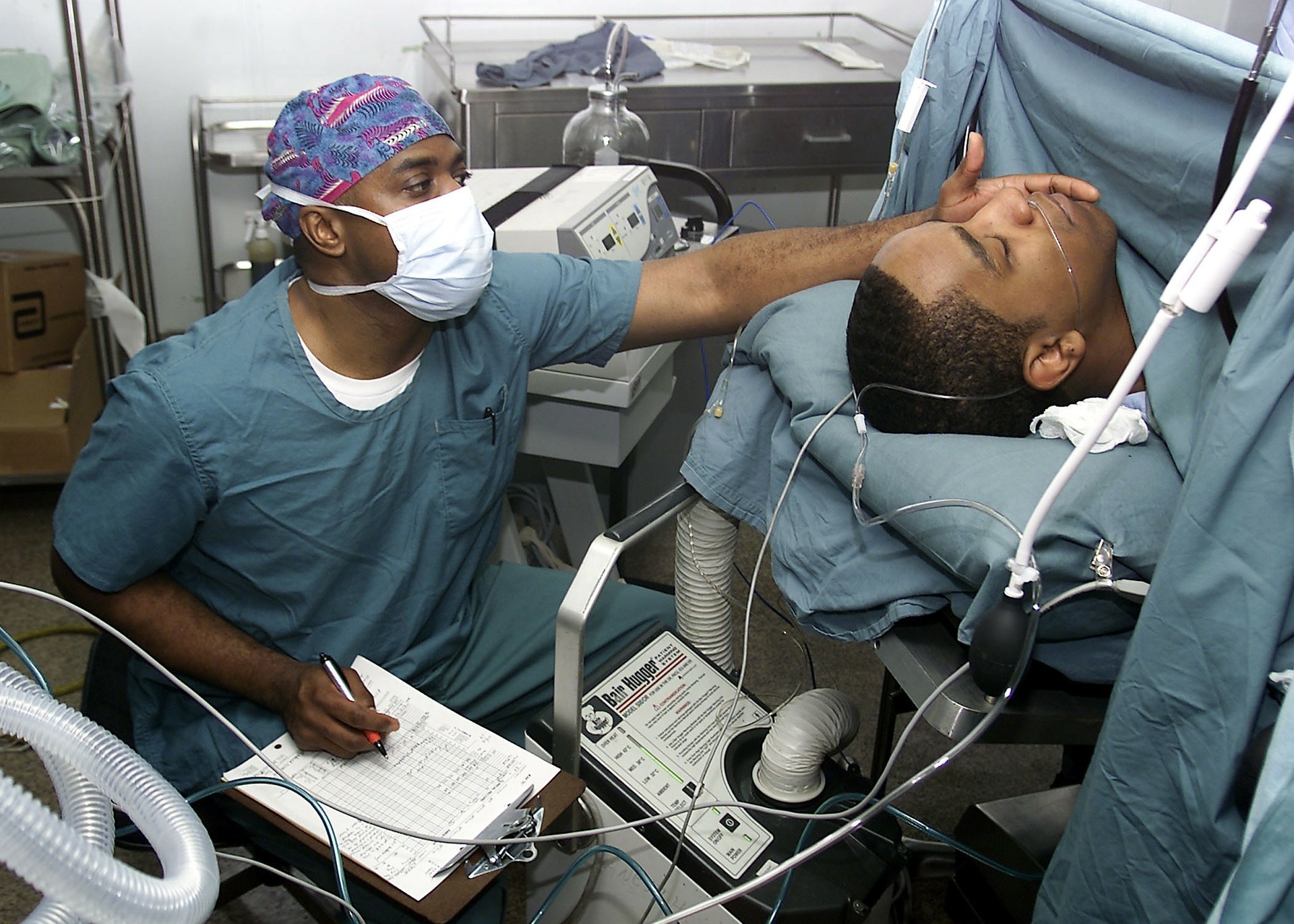
Surgical technologies, including patient monitoring systems, imaging technologies, and robotic surgical tools all depend on advanced medical connectivity products.
Surgical equipment is evolving rapidly with the development of new products used for minimally invasive procedures, where there is a much smaller incision, recovery is quicker, and the hospital stay is shorter or nonexistent. Manufacturers are using RF energy-based devices for surgical cutting and vessel and tissue sealing applications. State-of-the-art surgical robotic systems, which used to be a luxury item reserved for cardiac thoracic surgeons, are now rapidly becoming a standard of care for many surgical applications. Endoscopy procedures have historically involved a reusable endoscope that must be cleaned, disinfected, and sterilized between patient procedures, but medical device companies are now beginning to offer single-patient-use endoscopes for a broad spectrum of medical procedures.
The therapeutic equipment market, which includes automated external defibrillators (AEDs), is growing rapidly due to the increased prevalence of cardiovascular diseases. AEDs are portable lifesaving devices that can deliver up to 360 joules of defibrillation therapy energy if the heart stops during sudden cardiac arrest. These systems use single-patient defibrillation pads on the ends of the lead wires. Professional-grade AEDs are used by first responders including EMTs, police, and paramedics and public access devices are installed in numerous common areas.
Interventional equipment, such as implantable cardioverter defibrillation (ICD) technology, has advanced to extend battery life, improve patient monitoring and safety, and introduce new functionality, including quadripolar lead devices that improve programming and therapy effectiveness and enable MRI-safe ICDs. ICDs are implanted in patients who are at high risk for sudden cardiac arrest due to sustained ventricular tachycardia or fibrillation. Several newer ICDs offer pacing functions and wireless remote monitoring of the device data.
There are many new advances in devices for the consumer medical market as well, including sleep apnea monitoring and CPAP devices, diabetes management systems, blood pressure monitors, hearing aids, and drug delivery devices all designed for home use.
Advanced Medical Connectivity Products
As the connected and digital health market continues to grow, so does the need for more PCB connectors and cable assemblies that support Wi-Fi and Bluetooth capabilities. For example, the increasing need for high-power and high-speed medical connectivity products will continue to drive development in high-density rectangular connector designs because you can achieve higher contact densities in rectangular geometries. Similarly, the continuous demand for reusable surgical and therapeutic devices that must be cleaned, disinfected, and sterilized will continue to drive ongoing development for connectivity products including metal shell circular connectors. In addition, the increase in demand for disposable, single-patient-use connectors and cable assemblies for applications including endoscopy and electrosurgical equipment will continue to drive innovation in low-cost plastic shell circular connectors. As manufacturers continue to respond to these new and steady market needs, expect innovative new medical connectivity products with unique visual, audible, and tactile recognition systems, such as keyways, locking or latching mechanisms, magnetics, LEDs, vibration, and use-limiting features.
Design possibilities are expanding as new medical connectivity products appear to solve various application-specific engineering challenges. Numerous new types of mating interconnect solutions offer differentiation by combining features and functionality with ease of use. Connectors that provide visual, audible, and tactile confirmation of proper mating, especially in blind-mating applications, are often preferred by medical design engineers. The most common types of medical connector mating systems include push-pull, latching, locking, screw-in, rotational auto-coupling, magnetic, zero-insertion-force (ZIF), card-edge, CAM-actuation, and blind-mating products.
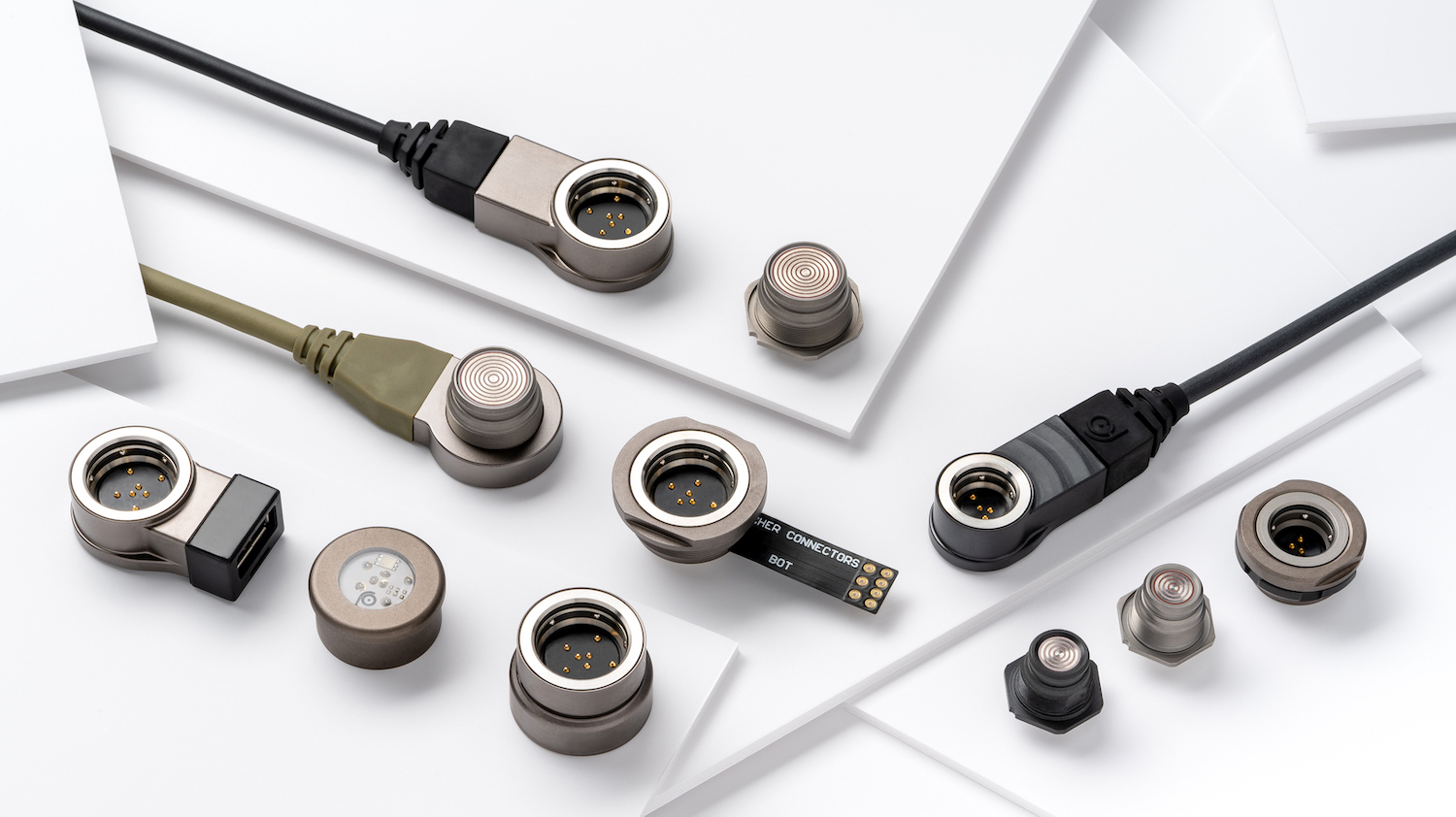
Fischer Freedom Series connectivity products from Fischer Connectors
The Fischer Freedom Series from Fischer Connectors supports advanced patient-worn medical devices with various features, contact configurations, sizes, materials, and active devices. These connectivity products are especially designed to help wearables engineers optimize device size, weight, and power (SWaP) requirements. The series features IP68 sealing and non-magnetic quick-release mechanisms that support blind mating and ease of use. These connectors are also well-suited for fixed medical devices, robotics, and wearables employed in industrial and military applications.
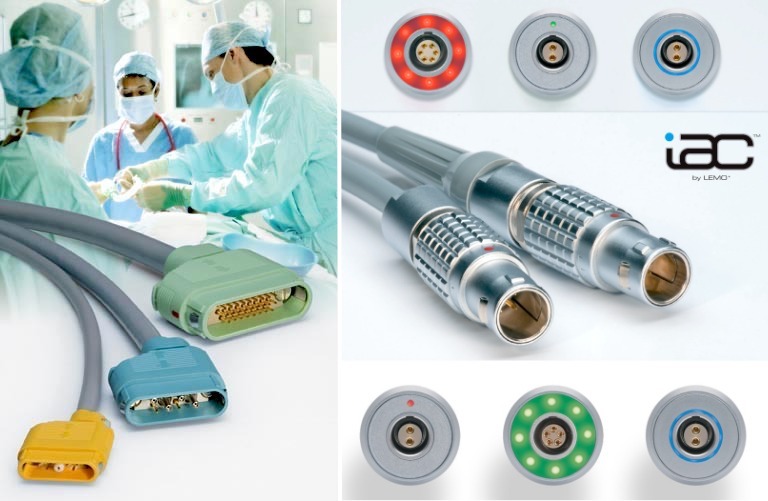
LEMO R-Series (left) and HALO connectors (right).
The LEMO R Series features high-density rectangular connectors with a flat profile ideal for space-constrained device panels and the company’s proven push-pull latching mechanism, which enables smooth and secure connections ideal for medical and dental applications. R Series connectors are molded using lightweight polyester resin, Crastin PBT from Dupont, and support various contact configurations, including multipole, coaxial, high-voltage, and fluidic. HALO LED connectors from LEMO have an LED-lighted flange that visually confirms connector mating engagement and is ideal for use in medical equipment. HALO LED technology can be encapsulated within LEMO’s B or T Series metal push-pull circular connectors.
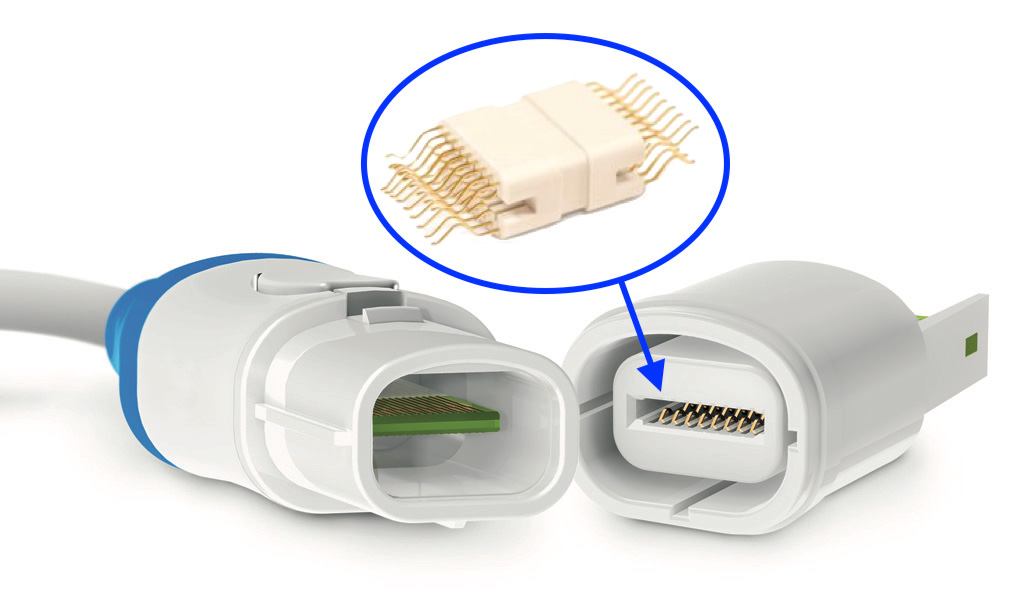
Smiths Interconnect’s Eclipta connector series
Smiths Interconnect’s Eclipta connector series uses card-edge technology as a reliable interconnect solution for high-mating-cycle electrophysiology applications, such as mapping and ablation catheters, as well as home healthcare devices and disposable medical devices. The series has a double-ended, edge-card contact system that uses a PCB as the contact on the disposable connector side.
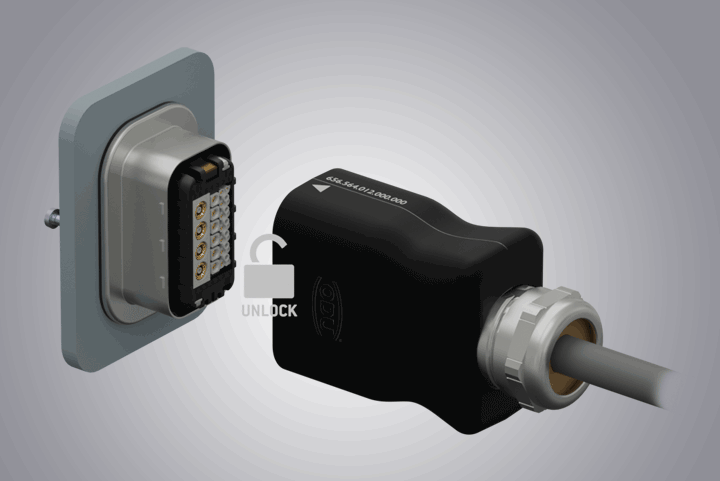
ODU-MAC PUSH-LOCK connectors establish secure connections with a user-friendly, single-handed mating mechanism.
ODU offers modular rectangular designs and coupling options in its ODU-MAC and ODU DOCK lines, which can combine signal, power, high-current, high-voltage, high-frequency coax, pneumatic, fluidic, high-speed data, and fiber optic contacts. These connectors are ideal for a wide variety of medical applications, including diagnostic imaging equipment and therapeutic devices. The ODU-MAC PUSH-LOCK enables easy, one-handed operation, can be custom-fitted with up to 70 signal contacts, also handles power, coax, air, fluid, data, has an IP67 moisture ingress rating, and supports more than 5,000 mating cycles.
SOURIAU’s JMX Series circular, plastic, push-pull connectors are waterproof (IP68) and can withstand up to 200 four-minute cycles of autoclave sterilization at 134°C per IEC 60601-1, which makes them ideal for resuable medical equipment that requires intense cleaning, disinfection, and sterilization. The JMX Series is robust, reliable, and lightweight and has an ergonomic, easy-grip design with push-pull latching mechanisms, visual indicators for intuitive mating, and blind mating capabilities. It is available in nine layouts, nine color codes, six keying options, and four diameters spanning 0.5–1.3mm and is rated for up to 10A, 1,200V, and 2,000 mating cycles.
Caton’s QL Series connectors and cable assemblies are used for medical therapeutic and surgical applications and are available in four shell sizes with hybrid combinations of pneumatic, fluidic, and fiber optic contacts. The QL Series also features an auto-locking mechanism that mates with a rotational latching mechanism to provide positive confirmation of connector engagement with an affirmative push and click.
Conclusion
As you already know by now, the ventilator market is expected to experience tremendous growth over the next five years as the medical device community works to help alleviate the worldwide shortage of ventilators needed to support patients that have contracted the coronavirus, as well as other infectious diseases that may emerge. Innovation is occurring across this product category, with significant advancements that draw upon advanced medical connectivity products.
The new Bishop & Associates 2020 Medical Interconnect Solutions report provides an in-depth review of the political, economic, sociocultural, technological, environmental, and legal (PESTEL) factors that have an impact on healthcare, medical device providers, and medical interconnect solution suppliers. The report also shares extensive knowledge, research, and insights about market and technology factors, as well as key players within some of the largest sub-market sectors that are expected to contribute to significant growth. Throughout the new report are examples of new and existing medical devices, along with connectors and cables used for monitoring, diagnostic, surgical, and therapeutic medical applications, each of which has its own unique electrical, mechanical, environmental, safety, and regulatory requirements. The report also discusses medical product design considerations, outsourcing trends, supply chain analysis, switching costs, and cost drivers.
